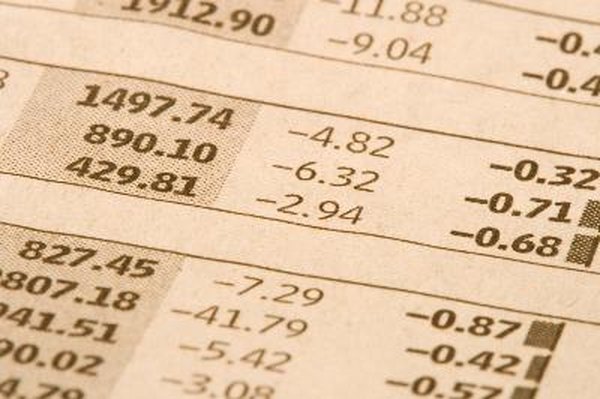What Is the Difference Between a Portfolio & a Watch List?
Watch lists and portfolios help you keep track of stock prices.
Stock quotes image by Chad McDermott from Fotolia.com
Monitoring your current or prospective investments allows you to track price movements and note important fluctuations. This knowledge may be just the decision-making tool required to withdraw from or increase your position. Portfolios and watch lists offer this monitoring environment, but they differ in when and how they are used.
Ownership
The primary difference between watch lists and portfolios is the ownership of the security. Portfolios only list stocks you actually own. Conversely, watch lists may include securities you currently own and those in which you have no current investment. As such, watch lists are more flexible and allow you to track any kind of security, whether you wish to buy it or not.
Adding Securities
Adding securities to a watch list only requires entering the security's ticker symbol. No other information is required. On the other hand, securities may be automatically added to your investment portfolio when you make a purchase through the portfolio account. Portfolio services that are unlinked to a brokerage may require you manually enter your purchase information, such as price, number of shares and date of purchase.
Information Displayed
Watch lists offer a simple display of a security's price movement, along with news and stock information. Portfolios go well beyond this limited display by adding real-time quotes and comparison to market indices. Because the portfolio contains original purchase information, it also automatically calculates your current position and shows you realized gains or losses.
Security Updates
Portfolios automatically adjust your position to compensate for stock splits, mergers or reorganizations. As an example, a two-for-one split would adjust holdings from 100 shares to 200 shares with the appropriate price adjustment. However, a watch list would only display the new price, which could leave you wondering what happened. As an example, you might notice the price dropping to half its previous value, but it might not be obvious the stock had split and not really lost value.
References
Writer Bio
C. Taylor embarked on a professional writing career in 2009 and frequently writes about technology, science, business, finance, martial arts and the great outdoors. He writes for both online and offline publications, including the Journal of Asian Martial Arts, Samsung, Radio Shack, Motley Fool, Chron, Synonym and more. He received a Master of Science degree in wildlife biology from Clemson University and a Bachelor of Arts in biological sciences at College of Charleston. He also holds minors in statistics, physics and visual arts.

